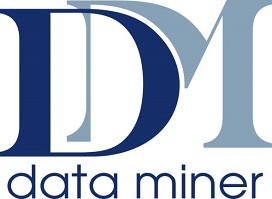Overview
Delegates attending this course will learn real world best practices for creating strategies for Microsoft 365 Adoption and Governance. Delegates will gain a thorough understanding of the benefits of Microsoft 365 adoption and governance for true digital transformation within their business. Delegates will understand the synergistic relationship between governance, adoption, training and resources for successful business change using Microsoft 365.
Audience
Anyone from Executives, IT Professionals, Change Leaders who are interested in learning the benefits and best practices of Microsoft 365 Adoption and Governance
Prerequisites
A high level understanding of Microsoft 365 concepts and a desire to understand the risks of not having an adoption and governance strategy to successful Microsoft 365 deployments and benefits of good adoption and governance as an enabler of true digital transformation through Microsoft 365. There are no technical skills required for this course
Outline
Module 1 – Microsoft 365 Adoption
Why does adoption matter?
Adoption Requirement Overview
Adoption requires behaviour change – change is hard
Change is about people
Adoption Plans – Why some organisations don’t use one
Adoption Plans – Why you should use one
Establish a baseline
Microsoft 365 Usage Reports
Microsoft 365 Productivity Score
Microsoft 365 Usage Analytics
CEOs and Executives matter
CEO Impact
Executive ABC’s
Executive Adoption Catnip
Setting targets is key
SMART Measures
Focus on Conditions over Causes
Obstacles to change
Natural human resistance to change
Shadow IT
Disparities between the Organization and Users
Unaligned Technical readiness and user readiness
Microsoft 365 Adoption Framework
Adoption Planning Workbook
Envision Phase
Assemble Your Team
Who should be involved in adoption?
How can Executive Sponsors drive project success?
Success Owners and why are they important?
Who are Early Adopters?
Champions
Who are Champions?
What makes a good Champion?
What Champions should do?
Tips for Champions
Recognise (and possibly reward) your Champions
Other Team Members
Define Business Strategy
Identify the business objectives
Be careful what you ask….
Use Scenarios
Scenario framing
Prioritise Scenarios
Define success criteria – establish Key Performance Indicators
Example KPIs – Don’t copy and paste
Onboarding Phase
Prepare Your Environment
Technical Readiness
Design Microsoft 365 Foundation Infrastructure
Design Solutions
Solution Design Best Practices
Organisational Readiness
Build Your Adoption Plan
Develop your communication strategy
Communication strategy questions:
Who needs to be informed? – And in what order?
What do they need to know?
How do they like to communicate?
Drive awareness through end user engagement
Communicate value to the business through scenarios
Incorporate success stories
What makes a good success story?
Hold Promotional events
Promotional Events best practices
Free Helpful communication resources
Design an Incentive Program
Training
Build your training strategy
Who needs to be trained – and in what order
What do they need to learn and when do they need to learn it
How will they learn
Training validation
Training resources
Deliver solution based training
End training with a call to action
Help and Training Site/Hub
Help and Training Site Best Practices
Align your training strategy to the launch plan
Access training resources
Social Adoption Strategy
Launch to Early Adopters
Adjust Your Plan
Drive Value Phase
Monitor End User Adoption
Encourage Ongoing Engagement
Strategies for driving engagement
Adoption Support Resources
Module 2 – Microsoft 365 Governance
What this course is
What this course is not
Beware ‘Oven Ready’ Governance documentation – you will get burnt
What is governance?
Definition
What governance should do?
Start with the End
Be careful of Rainbows and Unicorn Outcomes
How does governance help?
Governance often causes conflict
Why do organizations need governance?
What does no governance look like?
Impact of Poor Governance Examples
Lack of Control and security of data
Lack of managed processes
Data breach risks
Governance drives performance and best practices
Governance is not enough
Governance is not control freakery
Components of governance
Polices
Processes
Roles
Responsibilities
Tips for effective governance
Make policies consumable
Have an accessible central location for all governance information
But also make polices available at the point user is working
Make policies friction free
One size may not fit all
Policy creation and/or modification needs to be agile
Have a rapid feedback loop
Trust but verify
Include governance in product training
Focus on what is achievable
Accept that different teams may have conflicting desires
Create a resource centre to combine training, adoption and governance resources
The governance creation process
Put together the right governance team(s)
Identify how to write governance if governance does not exist
Decide what needs to be covered – by scope
Decide what needs to be covered – by area
For each area identify tasks (item lifecycle)
Roles and Responsibilities
The End is just the beginning

